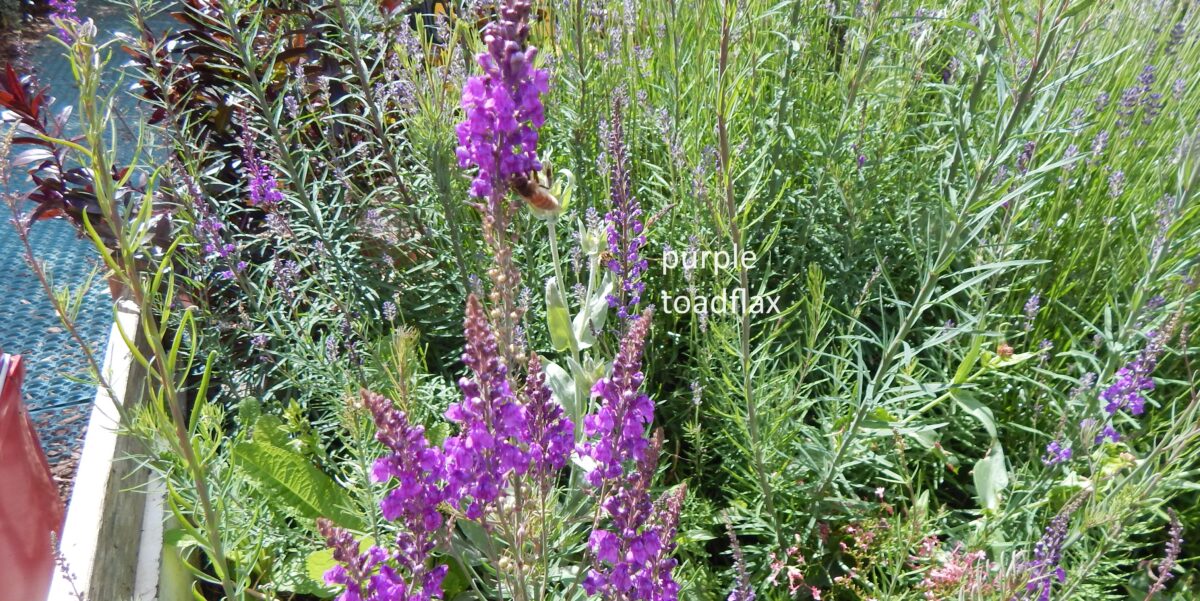A week of rainy and dull days, interspersed with sunshine as the season gradually warms. The rain and warmth has brought out the spring flowers. There’s geums still in bloom in our Fothergill bed, orange and red, like little paper handkerchiefs. Roses here are there, white and pink, and one a deep red hidding by the greenhouse. There’s sysirhincium, as difficult to spell as it is to say, valarium, like smaller versions of purple lilac, foxgloves, that really should be in the woods. How poisonous are they? I look it up. The Woodland Trust says: ‘Symptoms include nausea, headache, skin irritation and diarrhoea,’ and the possibility of heart and kidney problems. Though, there’s nothing about them that would lead anyone to eat them.
Sitting near the Fothergill bed, I gaze around me and see marigolds, lavender, roses, and elderflowers. Lots of the latter in the tree by the mid gate. We really should gear up for late May and make elderflower champagne. Its snowy canopy will soon to be gone.
The sparrows are making a fearful racket, hurrying too and fro. I wonder whether it is the parakeets which have returned. The latter are originally from Africa and southern Asia. They were kept as pets in the UK, and somehow escaped into the wild. The birds have become naturalised in the south-east especially, aided by warmer winters. They eat berries and nuts, so are not predators to the sparrows, but it could be their harsh screeching and the size of them alarms the timid, smaller bird.
The pond is notably less green. There are tadpoles everywhere. Soon, if the pattern of previous years is followed, we should see a drop in numbers. I look for any with back legs and don’t see any. The tiny backswimmers are growing daily, just a week or two ago, they were the size of pinheads, but feeding up in the warmer weather, they are heading for maturity. When adult they will eat tadpoles but there are so many tadpoles, backswimmer predation will make little difference in numbers.
The pond irises have mostly faded, the few remaining are like dishevelled yellow hats on Edwardian matrons after a shower of rain. I saw quite a few irises last Sunday in the Bandstand pond (aka Angel pond) at the corner of Capel Road and Centre Road. It is a sometimes pond, that dries up in hot weather. There is a photograph from the early 1900s showing the lake with pedalos, the bandstand in the distance, and couples strolling along the promenade beneath the newly planted trees.
I was leading a wildflower ramble on the Flats. And saw what seemed to be a host of dandelions, but on closer inspection, I noted the flower was right but the stalk was too tall, and the leaves less toothed and were furry. Not dandelions but a related plant, commonly known as cats ears. We didn’t see a single dandelion, but lots of plantain, and across the Flats, into the distance, the broom a mass of yellow flowers. This is an area of acid grassland. The soil is poor in nutrients, and low in pH, and is a Site of Special Scientific Interest (SSSI) supporting scarcer insects including solitary bees and wasps. We tend to take the Flats for granted, being on our doorstep, but it’s worth a visit to see some of its unusual flora and fauna.
I shall be running two more of my wildflower rambles. The next is on Sunday, 16 June, 1 to 3pm. It is no route march, no more than a mile or so, as our main interest is the flora. All are welcome.
Here and there in the garden is the wildflower, purple toadflax, one of my favourites, with spikes of tiny purple flowers. In our wildflower bed, we have a profusion of blooms: red poppies, California poppies (golden yellow), scentless mayweed (a large daisy like bloom), borage (blue), white campion, and lots of buttercups. Nearly at its best, the wildflower bed is already the sight of the garden.

